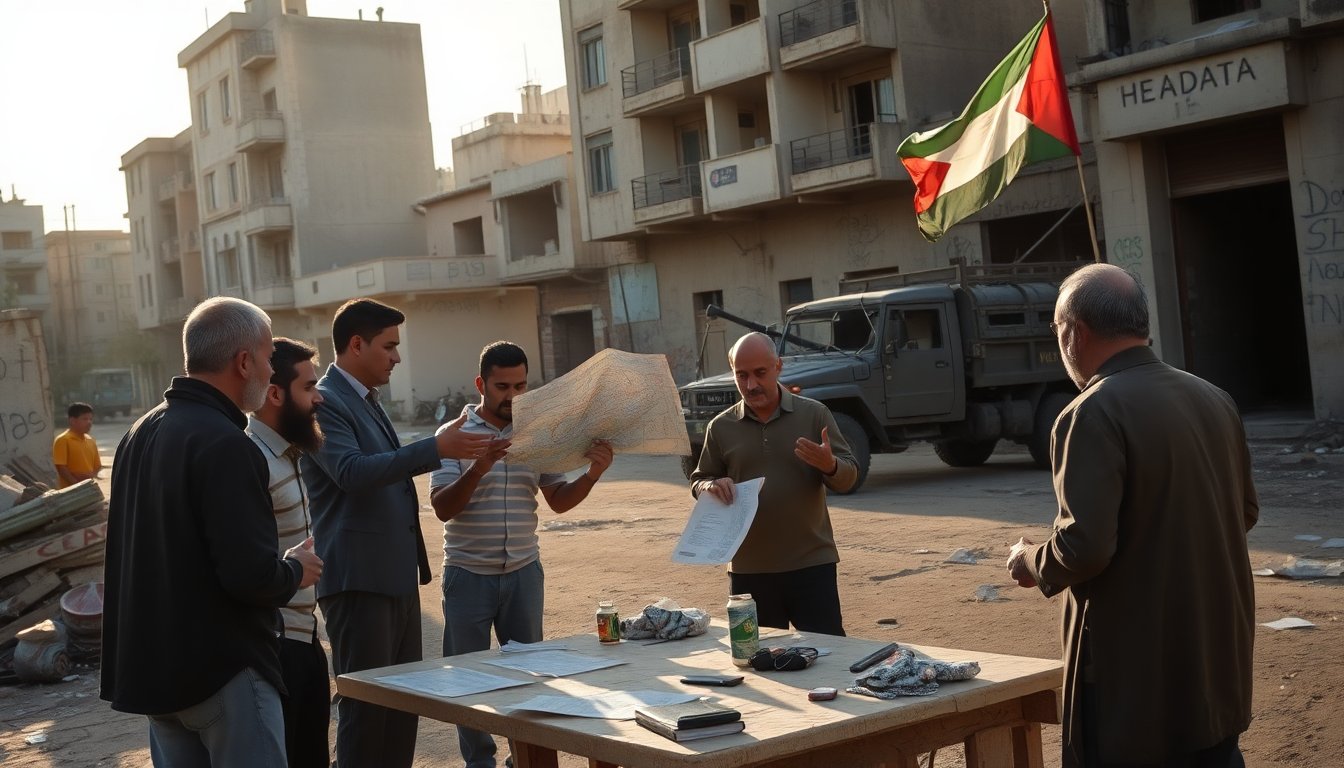Table of Contents
The ongoing conflict between Israel and Hamas presents various challenges, particularly concerning the negotiations for Hamas’s disarmament. Despite an initial ceasefire agreement, significant differences remain between the parties, especially regarding Hamas’s military arsenal. Resolving these issues is crucial for establishing lasting peace in Gaza.
Israel demands that Hamas surrender all weapons as a condition for halting military operations. Additionally, Israel insists on the dissolution of Hamas as a governing body in Gaza. This stance reflects Israel’s broader strategy to eliminate armed resistance.
The facts
In response to disarmament demands, Hamas has publicly rejected calls for disarmament. However, experts suggest there may be some willingness to negotiate aspects of its arsenal behind closed doors. Hugh Lovatt, a specialist from the European Council on Foreign Relations, notes a significant shift in Hamas’s position regarding its weapons. Discussions indicate that Hamas might be open to a gradual decommissioning of certain offensive arms.
This potential compromise highlights Hamas’s balancing act as it seeks to maintain military capabilities while engaging in dialogue that could lead to peace. Nevertheless, analysts warn that negotiations over the weapons could jeopardize the fragile ceasefire.
Reactions
Under international humanitarian law, armed groups can defend themselves against occupying forces. This legal framework often arises in discussions about the rights of groups like Hamas. Historically, however, Israel and its Western allies have insisted that Palestinian factions disarm as part of any peace negotiations. This precedent traces back to the Oslo Accords in the 1990s, which aimed to address the ongoing conflict.
Current negotiations reflect these past demands, with Israel likely to maintain its insistence on complete disarmament. However, experts like Azmi Keshawi from the International Crisis Group argue that full disarmament is unrealistic. He anticipates Hamas may agree to surrender certain offensive weapons, such as missiles, while retaining small arms for internal security.
Background
The situation in Gaza is further complicated by the presence of various armed groups, including the Palestinian Islamic Jihad and the Al-Aqsa Martyrs Brigades. The extent to which these factions have been weakened by Israeli military actions remains uncertain. During this period, allegations have surfaced regarding Israel’s support for local gangs that have exploited the chaos.
Many residents of Gaza believe Hamas should retain some military capabilities to counter these gangs, which are allegedly armed by Israel. Analyst Taghreed Khodary emphasizes that, despite the challenges, Hamas has effectively maintained a degree of order. She argues that Hamas’s security provision is essential to prevent further exploitation of the vulnerable population.
As negotiations progress, there is speculation about deploying an international force to oversee a partial disarmament process. While Hamas might cooperate with such a task force, they would likely demand that the mandate excludes counterterrorism operations, fearing it would serve Israeli interests. Lovatt highlights the reluctance among Western nations to engage in roles perceived as supporting Israeli objectives.
Despite Israeli claims that their military operations aim to dismantle Hamas, experts like Keshawi argue that the group cannot be entirely defeated. Instead, he contends that Hamas embodies a broader sentiment of resistance resonating with many in the Arab world. The ongoing conflict has solidified this perception, reinforcing the group’s symbolic significance.
Israel demands that Hamas surrender all weapons as a condition for halting military operations. Additionally, Israel insists on the dissolution of Hamas as a governing body in Gaza. This stance reflects Israel’s broader strategy to eliminate armed resistance.0
Israel demands that Hamas surrender all weapons as a condition for halting military operations. Additionally, Israel insists on the dissolution of Hamas as a governing body in Gaza. This stance reflects Israel’s broader strategy to eliminate armed resistance.1


